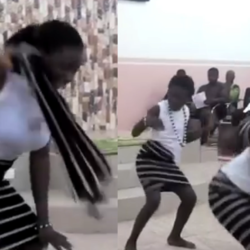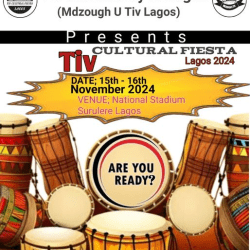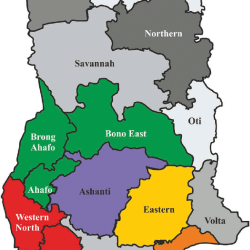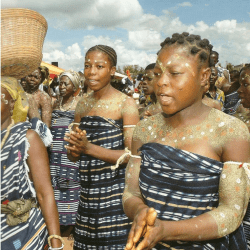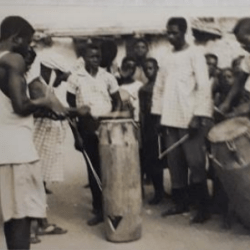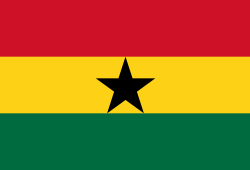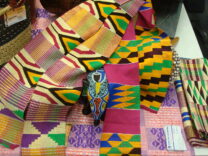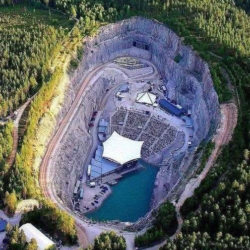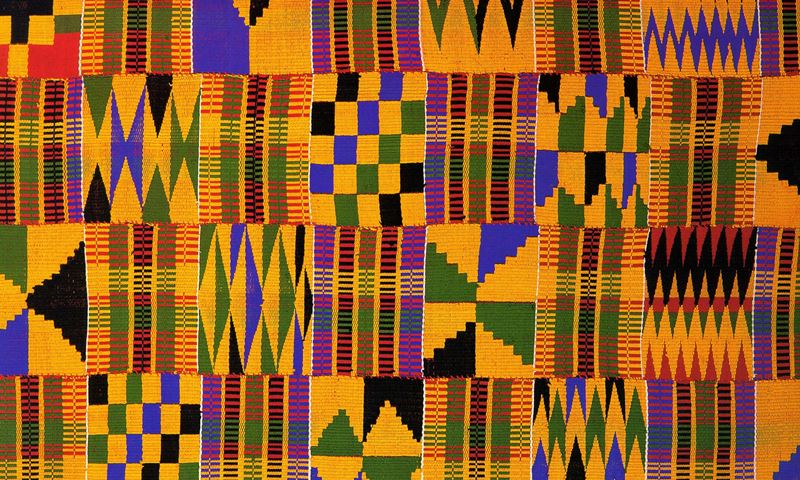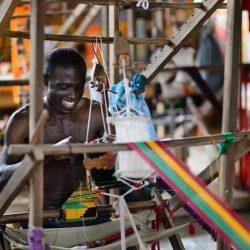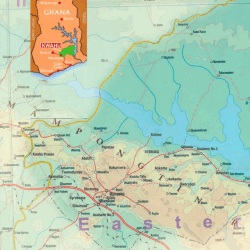Community: Ghanaian Community
Regions: Greater Accra, Central and Ashanti People
Highlife is a type of west African popular music and dance that originated from Ghana in the late 19th century, later spread to western part of Nigeria, and flourished in both countries in the 1950s.

Highlife is a west African music genre played on instruments in Europe and the United State.
It borrows from the Akan and Kpanlogo musical traditions of Ghana, but it intersects with many popular music genres including jazz, rock, hip-hop and afrobeat.

It encompasses a variety of artistic expressions: music, dancing, storytelling and theater. Performances by highlife bands are called concerts.
They usually start with comic or tragi-comic play filled with musical effects and intermezzos and end with a performance of highlife songs.

The songs are about many different topics, rural or urban, modern or traditional, true events or stories. Generally, however, the songs deal with themes like the problems of everyday life; poverty, marriage problems, hatred, gossip, shame, sickness, and death. Highlife gained popularity from live performances and recordings, which are produced in Ghana till date.
There were three main forms of early Ghanaian highlife – Local Adaha brass-band music, Fanti Osibisaaba and palm wine music.
The Local Adaha brass-band music played in the 1880s on the Fanti coast loacted in the south of modern Ghana, was a style of highlife that emulated western brass band in European forts across west Africa.Regimental bands of 6,000 West Indian soldiers, stationed at the cape coast and elmina castles by the british colonial administration included local musicians in their brass band regiments and taught them linear marching music. The local musicians after realizing how the west indians practiced traditional music, inspired them to do same.the local musicians fused the linear marching music with polyrhythmic local music and created a danceable stly called Adaha,as well as a style with cheaper, local instruments called konkoma(or konkomba).
Moreover, the Fanti Osibisaaba form in the 1920s, local musicians incorporated local percussion instruments accompanied by guitars and accordions of sailors, particularly the Kru Seamen from Liberia. The Kru Seamen, in the early 20th century, pioneered Africanised cross-fingering guitar techniques. This technique developed Ghanaian Highlife, but also the Maringa of Sierra Leone, the Juju music of western Nigeria and “dry” guitar music of Central Africa. Coastal Fanti Osibisaaba highlife percolated into rural Ghana during the 1930s, where it fused with the music of the traditional Akan “seprewa” or harp-lute. This combination created a more rootsy style of highlife called “odonson”, Akan “blues” or “palm-wine music”.This music was played in low class palm-wine bars at ports where sailors, dock workers, and working class locals would drink and listen to the music. Eventually this genre worked its way inland and a more Africanized version came containing 12/8 polyrhythms, this would be known as the “Native Blues”. This style would gain popularity up until World War 2 when production of the records were stopped.
Highlife in 1914, evolved from the large ballroom and ragtime dance orchestras such as the Excelsior Orchestra and Jazz Kings of Accra, the Winneba Orchestra, the Rag-a-jassbo Orchestraand Sugar Babies of Cape Coast and the Ashanti Nkramo Orchestra and it was from this the name ‘HIGHLIFE’, was coined in the mid 1920s by the poor people who gathered around the high-class dancing clubs when they heard local street songs being orchestrated because they could not afford the fee charged from the show.
Some notable individuals in the sector were; E.T. Mensah and his Tempos Band, Ramblers Dance Band, C.K.Mann and Carousal 7, The sweet Talks, Konadu’s Band, Oko’s Band, All Brothers Band, E.K. Nyame’s Band, City Boys Band, Ashanti Brothers Band, Kakaiku’s Band, The sweet Baens, The Police Dance Band, The Army Dance Band, The African Bothers Band, Okukuseku’s Band, Onyina Band, Akwaboa’s Guitar Band, Ogyatanaa Show Band, Yamoah’s Band and K. Gyasi and his Noble Band.
Highlife in Ghana today still leaves on and its sustainability has been gradual since it has taken several different forms because of influence from many other forms and diverse of music that has developed across the globe today. It has served and created a source of income to artists who take this part into music and others.
